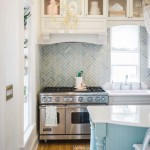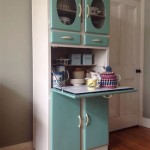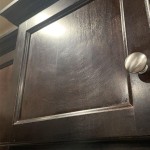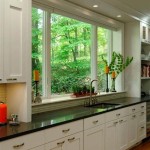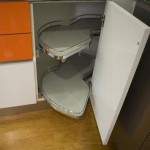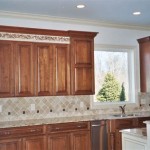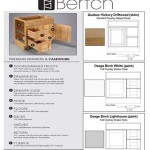What Kind Of Flooring Is Best For Kitchens And Bathrooms?
Kitchens and bathrooms are high-traffic areas in any home, subject to moisture, spills, and heavy foot traffic. Choosing the right flooring for these rooms is crucial to ensure durability, aesthetics, and a comfortable experience. This article explores various flooring options suitable for kitchens and bathrooms, highlighting their pros and cons.
Tile Flooring: A Classic Choice
Tile flooring remains a popular choice for kitchens and bathrooms due to its durability and water resistance. Ceramic tile, natural stone tile, and porcelain tile are common options. Ceramic tile offers a wide array of colors, patterns, and textures at an affordable price. Natural stone tile, such as granite, marble, and slate, adds a touch of elegance and sophistication but comes at a higher price. Porcelain tile is known for its durability and stain resistance, making it suitable for high-traffic areas.
Tile flooring's advantages include:
- Water resistance: Tile is impervious to water, making it ideal for areas prone to spills or moisture.
- Easy cleaning: Tile surfaces can be easily wiped clean with a damp mop, eliminating dirt and grime.
- Durability: Tile is resistant to scratching, abrasion, and fading, ensuring longevity.
- Variety of styles: Tile comes in a wide range of colors, patterns, and textures, allowing for customization and aesthetic appeal.
However, tile flooring has its drawbacks:
- Coldness: Tile can feel cold underfoot, especially in colder climates.
- Slippery surface: Wet tile surfaces can be slippery, posing a safety hazard.
- Hard surface: Walking on tile can be uncomfortable for prolonged periods.
- Installation costs: Tile installation can be labor-intensive and expensive.
Luxury Vinyl Tile (LVP): Versatility and Durability
Luxury vinyl tile (LVP) has gained popularity for its versatility, durability, and realistic wood and stone looks. LVP consists of multiple layers, including a wear layer, a printed image, and a core layer. The wear layer provides protection against scratches and stains, while the printed image replicates the look of natural materials. LVP is often available in planks or tiles, giving a more natural appearance.
The benefits of LVP flooring include:
- Water-resistant: Most LVP options are waterproof, making them suitable for kitchens and bathrooms.
- Durable: LVP is scratch-resistant and can withstand heavy traffic.
- Easy installation: LVP is typically click-and-lock, allowing for DIY installation.
- Comfortable underfoot: LVP offers a softer feel compared to tile, making it more comfortable to stand on.
- Variety of styles: LVP is available in a wide range of styles, including wood, stone, and even tile looks.
While LVP has many advantages, it's important to consider its limitations:
- Durability concerns: Although durable, LVP can be susceptible to dents and scratches, particularly from sharp objects.
- Potential for fading: LVP can fade over time if exposed to prolonged direct sunlight.
- Cost: LVP generally costs more than ceramic tile but less than natural stone.
Laminate Flooring: Budget-Friendly and Versatile
Laminate flooring offers a budget-friendly alternative to tile and LVP. It is made up of multiple layers, including a wear layer, a printed image layer, a core layer, and a backing layer. Laminate flooring is known for its durability, scratch resistance, and realistic wood looks.
Laminate flooring's advantages include:
- Cost-effectiveness: Laminate flooring is generally more affordable than tile and LVP.
- Durability: Laminate flooring is scratch-resistant and can withstand heavy traffic.
- Easy installation: Laminate flooring typically uses a click-and-lock system for easy installation.
- Variety of styles: Laminate flooring is available in various wood and stone looks.
However, laminate flooring has some disadvantages:
- Water resistance: Laminate flooring is not waterproof and can be damaged by spills or moisture.
- Limited durability: Compared to tile or LVP, laminate flooring is less durable and can be susceptible to scratches and dents.
- Less realistic appearance: Laminate flooring may not have the same natural look and feel as tile or LVP.
When deciding on the best flooring for your kitchen and bathroom, consider your budget, style preferences, and lifestyle. Each option has its strengths and weaknesses, and the ideal choice depends on your specific needs and priorities.

What Flooring Is Best For The Kitchen Or Bathroom

What Flooring Is Best For The Kitchen Or Bathroom

Best Kitchen Flooring Options 2024 Guide Forbes Home

Waterproof Bathroom Flooring Options Twenty Oak

5 Flooring Options For Kitchens And Bathrooms Empire Today Blog

Selecting The Best Flooring For Your Kitchen And Bathrooms Newhomesource

The Best Flooring For Your Bathroom Surplus Building Materials

How To Choose The Best Flooring For Your Kitchen Carpet Go

Luxury Vinyl Flooring Is A Great Choice For Chic Bathrooms

Best Bathroom Flooring Cork Tile For Rest Of The House Icork Floor
Related Posts

